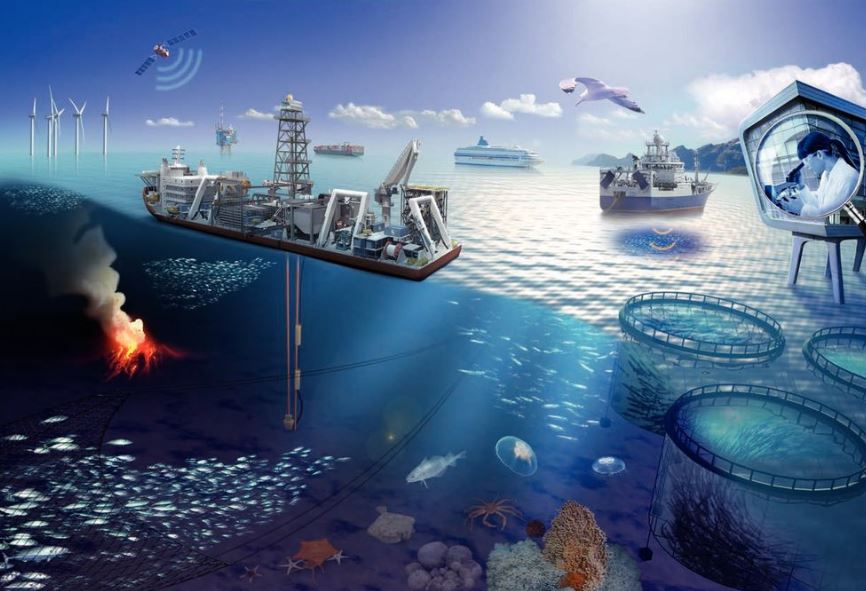Font size:
Print
Green Logistics at Ports: A Sustainable Future for Maritime Transport
Context:
India is actively promoting green logistics by installing EV charging stations at ports under the PM E-drive scheme and investing in electric mobility for port operations. Green logistics is a crucial strategy to reduce environmental impact while ensuring operational efficiency in the transportation sector.
Green Logistics: Concept and Significance
- Green logistics involves the adoption of eco-friendly technologies and practices across the entire supply chain.
- It aims to reduce carbon emissions, optimise resource use, and improve efficiency in logistics operations.
- It covers transportation, storage, distribution, and reverse logistics to ensure minimal environmental impact.
- Key technologies include electric vehicles, digital tracking, blockchain systems, and renewable energy integration.
Expanding Green Infrastructure at Ports
- The government is also focusing on port expansion with an emphasis on sustainability.
- Development of Vadhawan Port in Maharashtra is underway, with an estimated cost of ₹76,220 crore and a cargo handling capacity of 300 MMT.
- Roadway decongestion initiatives include the construction of a six-lane highway connecting the Jawaharlal Nehru Port Trust (JNPT) to the hinterland.
- Electrification of port operations contributes to India’s net-zero emissions goal by 2070.
India’s Green Logistics Initiatives at Ports
- The Union Heavy Industries Ministry has collaborated with the Ministry of Ports, Shipping, and Waterways to install EV charging stations at ports.
- This is part of the ₹10,900-crore PM E-drive scheme, with ₹2,000 crore allocated for EV charging infrastructure.
- ₹1,500 crore is allocated for subsidising electric trucks, recognising them as a sunrise sector.
- Electrification of trucks, forklifts, and tugs used in port operations is essential to reduce emissions and dependence on fossil fuels.
Global Examples of Green Logistics in Ports
- IMO 2020 regulations mandated a reduction of sulfur emissions from ships from 3.5% to 0.5%.
- Countries like Denmark and Norway are working towards zero-emission fleets by 2050 using biofuels and LNG.
- The Zero Emission Services consortium in Europe is developing battery-powered barges to eliminate fossil fuel use in inland waterways.
Vietnam’s Green Port Model
- Vietnam is emerging as a leader in green port development, aligning with its net-zero commitment by 2050.
- Government policies like Decision No. 888/QD-TTg and 710/QD-CHHVN provide a roadmap for mandatory green port compliance by 2030.
- Ports like Tan Cang Cat Lai and Long An International Port have adopted electric cargo handling equipment, digital tracking, and renewable energy solutions.
- Cai Mep International Terminal (CMIT) has committed to The Climate Pledge, aiming for net-zero emissions by 2040.
- Tesla has announced electric container barges, starting with operations in Rotterdam, Amsterdam, and Antwerp.
- Several ports have adopted cold ironing, where ships switch off generators and use shore electricity to reduce emissions.
Challenges in Implementing Green Logistics
- High initial costs for infrastructure and renewable energy solutions.
- Lack of awareness and technical expertise among port managers.
- Need for stronger policy enforcement and green financing mechanisms.
- Limited adoption of digital and AI-driven logistics solutions.
- Dependence on fossil fuels in many regions, requiring phased transition strategies.
Way Forward: Strengthening Green Logistics in India
- Public-private partnerships (PPP) to drive investments in green port infrastructure.
- Stronger incentives for electric mobility in port operations.
- Research and development in renewable energy solutions for ports.
- Integration of AI, IoT, and blockchain for efficient logistics management.
- Expansion of waterway transport to reduce road congestion and emissions.


